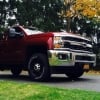Finally tested the Yank I put in my truck!
-
Recently Browsing 0 members
- No registered users viewing this page.
-
Forum Statistics
247.7k
Total Topics2.6m
Total Posts -
Member Statistics
-
Who's Online 17 Members, 0 Anonymous, 2,263 Guests (See full list)














Recommended Posts
Archived
This topic is now archived and is closed to further replies.